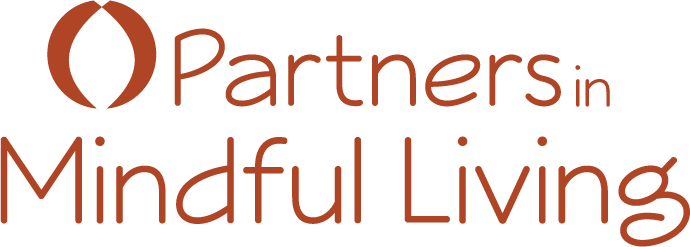
May 31, 2020
It hurts to be human.
When something hurts, it’s natural to want it to go away. Acceptance of pain, whether emotional or physical, doesn’t come naturally.
What comes naturally is to try everything you can think of to feel better. You’ve listened to podcasts, read the blogs, and taken courses about loving yourself.
The Happiness Seducement
We live surrounded by a societal headset that says if you’re not happy, something’s wrong.
And there are lots of books telling us how to achieve perennial happiness. In many cases, they’re appealing to our desire to feel better, and feel better NOW. But no matter how much we do what somebody else thinks we should do to be happy, we may not be able to lose the nagging suspicion that if only we could change this one unsightly thing about ourselves, our lives wouldn’t suck.
Maybe if you lost weight, got a facelift or a tummy tuck, then your life would be how it’s supposed to be. Or if you were more confident and less socially awkward, eliminated your chronic physical pain, or you found a partner, had a child, or got athletic and toned — then you could be happy.
We all have a few “if only that would go away,” or “if only I could have that,” issues—we believe the grass would be greener if we could achieve something a little bit closer to our notion of perfection. But much of this is an illusion. We all experience emotional pain. The same is true of physical pain. None of us will waltz through this life without experiencing some degree of both.
Oddly, the trick for managing both kinds of pain is to stop pushing them away. When we begin to develop a different relationship with pain, when we treat it the same way we would treat a troubled friend — with gentle kindness — something changes.
Resistance makes our bodies tighten up, our breathing becomes shallow, and we revert to our primitive brain. All we want is to run from the discomfort. The problem is that the pain isn’t outside of us, so running away gets us nowhere. If we want to experience any degree of peace, we have to befriend all the parts of ourselves.
We don’t love everything about our best friends. But if we want to maintain the friendship, we accept their imperfections and keep our eyes on the gifts that the relationship does offer. It’s the same with our relationship to ourselves . It’s not that we prefer being imperfect. But when we learn to accept our limitations, change our relationship with them, we have a better chance of handling ourselves in satisfying ways.
An example of self-acceptance might be as simple as acknowledging that we don’t want to have a child. I have a client who has spent the better part of her adult life thinking that something was missing because she hasn’t had a child. But then she realized she has been making decisions all along that kept her from experiencing that form of relationship. She was able to acknowledge that, though she loves kids, that doesn’t automatically translate to having one of her own. Way deep down she believed that meant something was wrong with her. When she acknowledged the truth, her relief was palpable. Self-acceptance is a balm for self-inflicted emotional wounds.
Bullying ourselves, or bullying the life we have been given—trying to force anything to meet our expectations or desires—doesn’t work. Whatever we put our attention on will grow, be it good, bad, or indifferent.
Once we acknowledge and accept the reality of what life has handed us — we’re too short, too tall, too thin, too stubborn, too timid, too loud, too quiet — we can take action and change what isn’t serving us. Instead of saying “I’m too tall,” we say, “I’m tall.” But when we’re in resistance mode, acceptance or change are impossible.
Acceptance and Non-Resistance in Action
For years I struggled with impatience. I barely let people finish their own stories without interrupting or finishing their sentences for them. But when I began to notice how annoying it was in other people when I was on the receiving end, I woke up and felt deeply embarrassed.
So I decided to do something about changing my behavior. I began to explore it rather than hate it. I spent the better part of a year, off and on, casually exploring impatience, and its opposite — patience.
Before the internet became a way of life, I kept a massive dictionary sitting next to my meditation chair—I still miss it! Every other week or so, I’d pick up that rich, heavy book and look up synonyms and antonyms for patience and impatience.
And then I’d write out the answers to a variety of questions. How would my life be different if I was patient? How would I behave differently, and how would that make me feel? How does my life work when I’m not patient, and how do I feel about that? How effective am I?
After I’d been exploring patience for a year or so, my seven-year-old son came home from school with a paper. It was a clown holding several balloons. His task was to identify people he knew and put a name and descriptive characteristic in each balloon. He said his gerbil was playful. His dad was kind. And, drumroll . . . he said I was patient!
Just the act of exploring — without force — rather than resisting, allowed my psyche to work for me over that year, creating changes below the surface that eventually worked in my favor.
I still haven’t completely mastered the art of patience — as anyone who knows me will gladly high-five. But once I acknowledged the problem, rather than shaming myself, I fostered a desire to do something about it, while gently reminding myself every now and then that it was okay if I slipped up.
That’s how change begins. We stop shaming ourselves for not being perfect, whatever our definition of perfection may be.
It’s okay to ask more of ourselves, as long as we’re not using guilt as a motivator.
We are capable of so much more than we ever allow ourselves to imagine. And much of what we achieve is because we’re learning a lot about ourselves along the way, not because we started out already knowing it.
How to Make Friends with Yourself
- Identify some part of yourself that you resist or hold in contempt or hide from because you’ve decided it is unacceptable.
- Step back one degree and attempt to look at it without judgment, the way you look at an innocent child who hasn’t yet learned how to manage themself as effectively as you’d like. Set an intention to explore that part of yourself with openness, willingness, and curiosity. And willingness means you’re even open to acknowledge and experience whatever current unwillingness you’re feeling!
- Once you’ve sparked your innate curiosity, your resistance will soften and the next step—the next right thing to do—will show up, and not before. Curiosity is a partial cure for so many barriers to our happiness — depression, anxiety, judgment, psychological rigidity—pretty much anything we would prefer to ignore or repress can be a barrier. Curiosity led me to open a giant dictionary.
Curiosity and non-resistance are two doorways to peace amidst even the most strident chaos.
I hope you’ll play with these ideas. You’ll know you’ve stopped playing if you start to shame or guilt yourself for not doing it perfectly. That may mean it’s time to slow down or take a break and come back to the problem or challenge with a fresh perspective.
I still occasionally find myself interrupting my partner. Thankfully, he knows I’m trying to change that, and that I am working on realizing it when I do. And really, that’s all that matters.
Perfection is for robots, not real people.
Much love,
